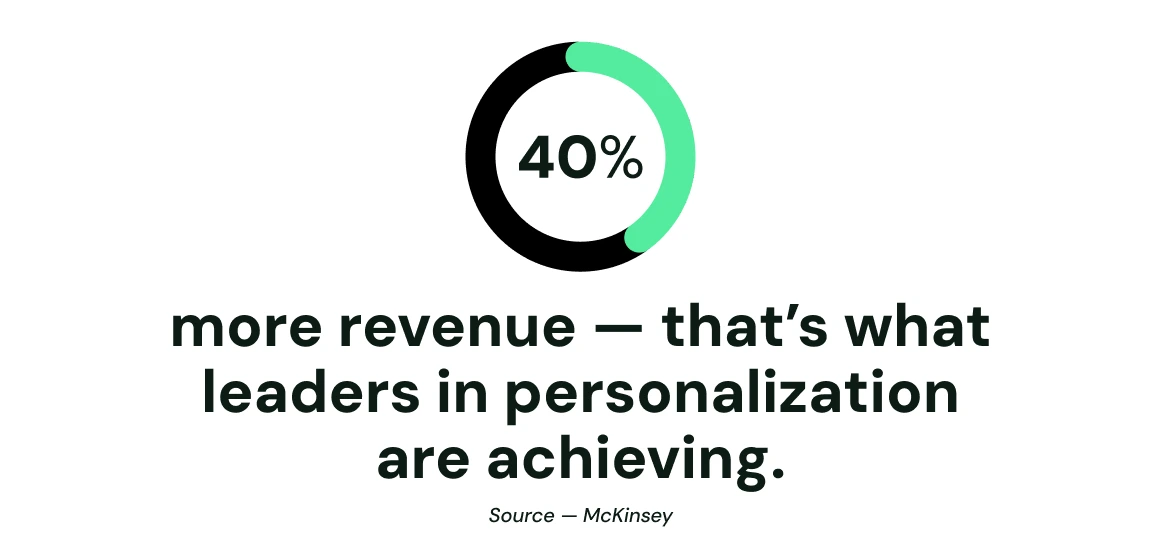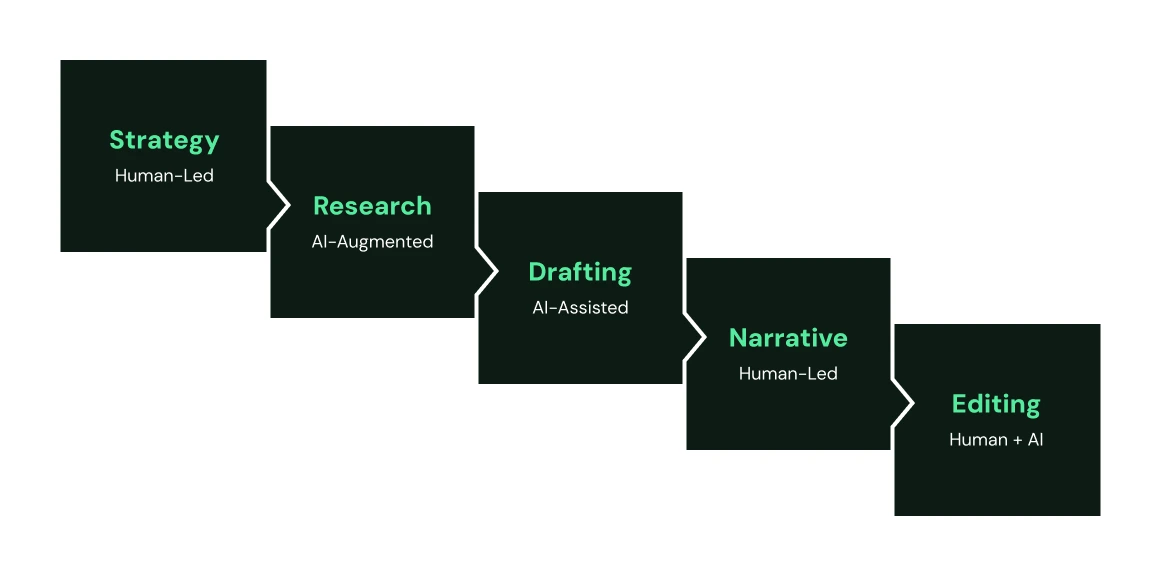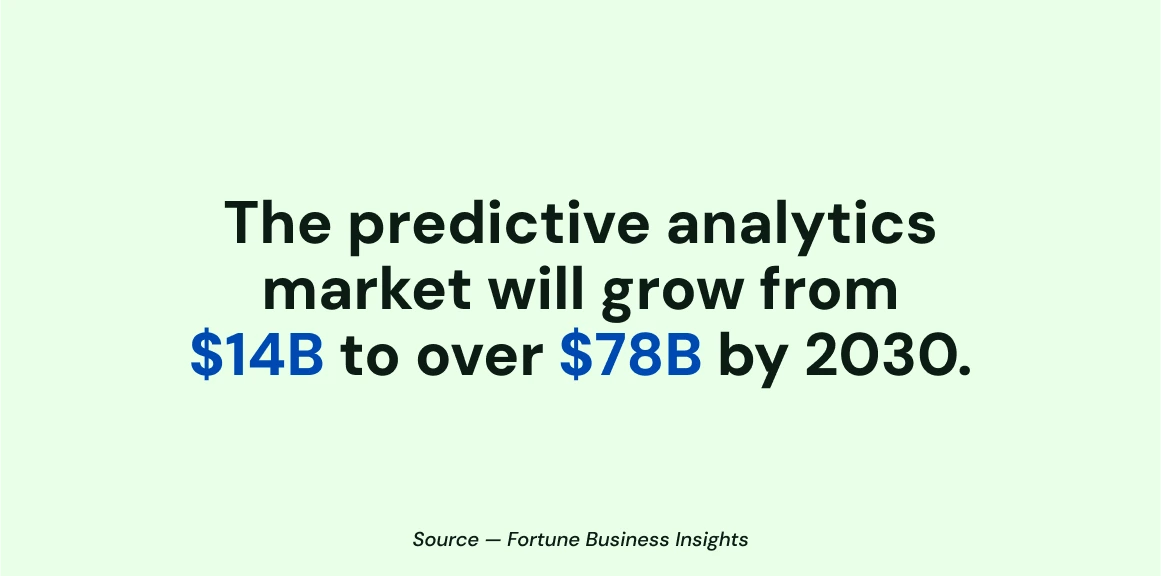August 25, 2025
|8 minute read

The internet of 2025 is drowning in a sea of beige. A tidal wave of perfectly grammatical, utterly forgettable, AI-generated content is flooding every channel, a phenomenon industry observers have noted as a significant challenge to creating authentic engagement.
In a frantic race to scale, many organizations have handed the keys to generative AI and asked it to write.
This is a fundamental mistake. Asking AI to be your writer is like asking a calculator to be your Chief Financial Officer. It can execute a function, but it lacks strategy, insight, and accountability.
The real transformation—the one that will separate market leaders from laggards—is not in content automation, but in content intelligence. In 2025, AI’s greatest value is not in replacing your marketing team, but in arming them with the strategic foresight to win.
This article provides a framework for that shift. We will move beyond the hype of automated blog posts and explore six critical transformations AI is bringing to B2B content strategy.
Reading this will equip you to:
This isn’t about prompting better. This is about building a smarter, more effective content engine.
For years, personalization in B2B marketing has been disappointingly superficial. A dynamic [Company Name] tag in an email is not personalization; it’s a mail merge.
True personalization understands a prospect’s context: their industry, their role, their challenges, and their specific stage in the buying journey. Historically, delivering this at scale has been impossible. Today, it’s essential.
AI makes this possible.
By integrating with your Customer Relationship Management (CRM) platform, marketing automation systems, and intent data providers, AI can build a dynamic profile of each prospect, analyzing real-time behavioral signals.
How It Works in Practice:
Imagine a prospect from a tech firm visits your website. Previously, they’d see the same homepage as everyone else. Now, AI identifies their industry and behavior, then serves up relevant case studies, blog posts, and chatbot prompts—all in real time.

The ROI is compelling.
Research from McKinsey confirms that companies excelling at personalization generate 40% more revenue from those activities than their peers. (Agliano et al.) For B2B, where purchase decisions are complex and involve multiple stakeholders, this demonstrates from the first touchpoint that you understand the customer’s world.
The strategy is no longer to create one asset for thousands. It’s to create systems that deliver thousands of personalized experiences, at scale.
For two decades, SEO has been largely defined by the keyword. This era is over.
Modern search engines, powered by sophisticated AI like Google’s own Multitask Unified Model (MUM), don’t just match keywords; they understand intent and context. They require a strategic evolution to what industry experts call Semantic SEO. (Search Engine Journal)
Semantic SEO is a strategy focused on building topical authority around a subject rather than just ranking for isolated keywords. The goal is to create a comprehensive web of content that answers every conceivable question a buyer has about a particular problem or solution. AI is uniquely capable of architecting this strategy.
Instead of guessing which keywords to target, AI tools can analyze the entire search landscape for a core topic, identifying themes, mapping user intents, and uncovering semantic gaps that competitors have missed.
An AI-driven content brief is no longer a list of keywords; it’s a strategic blueprint for a “topic cluster” that signals comprehensive expertise to both users and search engines.
By adopting this model, B2B marketers move from being reactive players in the search game to becoming the definitive source of information in their niche. This builds immense trust and creates a powerful competitive moat that is far more durable than a few top keyword rankings.
The fear that AI will replace skilled writers is misplaced. The most effective B2B content teams will operate on a “Human-in-the-Loop” (HITL) model that leverages the best of machine intelligence and human creativity.
This approach is critical for mitigating risks like factual errors and maintaining brand voice.Gartneradvises that “all AI-generated content must be reviewed by a human for accuracy, appropriateness, and usefulness.”
The strategic approach is to delegate tasks appropriately, creating a new, more powerful editorial workflow:

This model doesn’t diminish the role of experts; it elevates them.
It frees them from grunt work, allowing them to focus on the high-value tasks of analysis and strategic communication that machines cannot replicate.
An authoritative content strategy doesn’t end when an asset is published; it ends when it helps close a deal.
For too long, marketing’s valuable content has languished in a resource library, disconnected from the sales team’s daily conversations. AI is the bridge that closes this gap, transforming static content into dynamic sales tools.
This evolution from content creation to content activation is a cornerstone of modern B2B strategy. According to research on the future of B2B sales, “sellers need access to the right content at the right time to advance deals,” and AI is the primary mechanism for delivering this “just-in-time” intelligence. (The Future of Sales)
How AI Activates Content:
1. Dynamic Content Generation: The strategy moves beyond text-based assets. A salesperson can use an AI tool to generate a personalized one-minute video script referencing a prospect’s specific pain point. They can create tailored presentation decks on the fly, pulling the most relevant slides and case studies for an upcoming meeting.
2. Intelligent Content Surfacing: Modern sales enablement platforms, powered by AI, can analyze a live sales conversation, understand the prospect’s objection, and instantly push the most relevant whitepaper or competitor battle card directly to the salesperson.
This transforms the content library from a passive archive into an active, intelligent arsenal for the sales team, ensuring marketing’s investment directly contributes to revenue.
For most of its history, content marketing has been measured in the rear-view mirror. We publish an article, wait months, and then analyze its past performance.

Predictive analytics, powered by AI, flips this model on its head by forecasting the performance of content before it is created.
The adoption of this technology is accelerating.
The global predictive analytics market is projected to grow from approximately $14 billion in 2023 to over $78 billion by 2030, a clear indicator of its expanding role across industries, including marketing (Fortune Business Insights). By analyzing historical data, market trends, and competitive landscapes, these platforms can assign a “performance score” to potential topics, allowing strategists to de-risk content investments and prioritize resources with confidence.
This shift from reactive analysis to predictive intelligence is monumental. It transforms the content strategist from a creative manager into a strategic operator who can forecast outcomes and justify investments with the same data-driven rigor as their colleagues in finance or sales.
AI’s power to generate content at scale is both an opportunity and a risk.
Without strict governance, it poses significant risks to brand integrity. Without proper oversight, generative AI can expose companies to risks including “data leakage, security threats, privacy violations, hallucinations, and copyright infringement.” (Forrester Research)
For B2B organizations, where credibility is currency, this is a non-negotiable issue.
An effective content strategy must be built on a foundation of rigorous AI governance. This includes establishing a formal usage policy, prioritizing human fact-checking for all claims, safeguarding brand voice consistency, and protecting proprietary data by avoiding public AI models for sensitive information.
Building these guardrails is not a bureaucratic hurdle. It is a strategic imperative that ensures you can harness the power of AI without exposing your brand to unacceptable risks.
The path to success with AI is counterintuitive. It does not lie in producing more content, faster and cheaper. That is a race to the bottom that will only add to the digital noise.
The true opportunity is to elevate the strategic function. AI’s real power is its ability to analyze, predict, personalize, and activate at a scale the human brain cannot match. It can show the most fertile ground for our ideas, help us understand our audience with unprecedented depth, arm our sales teams with winning content, and prove the return on our efforts with mathematical certainty.
The winning marketers will not be the best prompters. They will be the best architects—designers of intelligent systems where human expertise is amplified, not replaced.
Harness AI to deliver intelligent strategies, from planning and production to activation and performance. Explore what’s possible when you use it to power your entire content lifecycle.
Please enter your email address so we can send you a one-time pass code and verify if you are an existing subscriber.